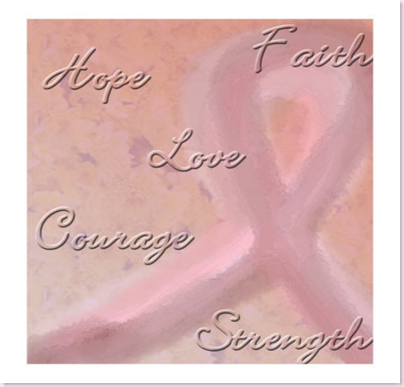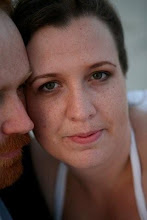October is breast cancer awareness month. I encourage all of you to have your mammogram's on scheduled. To give yourself regular "self checks". Should you feel something out of the ordinary go to the doctor as soon as possible. Early detection, and fast treatment can save your life.
An Early Breast Cancer Detection Plan should include:
- Beginning at age 20: Performing breast self-exams and looking for any signs of change.
- Age 20 to 39: Scheduling clinical breast exams every three years.
- By the age of 40: Having a baseline mammogram and annual clinical breast exams.
- Ages 40 to 49: Having a mammogram every one to two years depending on previous findings.
- Ages 50 and older: Having a mammogram every year.
- All Ages: — Recording personal exams, mammogram's and doctors' appointments on a calendar or in a detailed file.
— Maintaining a healthy weight, following a low-fat diet, getting regular exercise, quitting smoking, and reducing alcohol consumption.
Generally, early breast cancer does not cause pain. Even so, a woman should see her health care provider about breast pain or any other breast cancer symptoms that do not go away.
Common signs & symptoms of breast cancer include:
- A change in how the breast or nipple feels
You may experience nipple tenderness or notice a lump or thickening in or near the breast or in the underarm area. - A change in how the breast or nipple looks
This could mean a change in the size or shape of the breast or a nipple that is turned slightly inward. In addition, the skin of the breast, areola or nipple may appear scaly, red or swollen or may have ridges or pitting that resembles the skin of an orange. - Nipple discharge
HOW TO DO A BREAST SELF-EXAM

In the Shower
Fingers flat, move gently over every part of each breast. Use your right hand to examine the left breast, left hand for the right breast. Check for any lump, hard knot, or thickening. Carefully observe any changes in your breasts.

Before a Mirror
Inspect your breasts with your arms at your sides. Next, raise your arms high overhead.
Look for any changes in the contour of each breast, a swelling, a dimpling of the skin, or changes in the nipples. Then rest your palms on your hips and press firmly to flex your chest muscles. Left and right breasts will not exactly match—few women's breasts do.

Lying Down
Place a pillow under your right shoulder and put your right arm behind your head. With the fingers of your left hand flat, press your right breast gently in small circular motions, moving vertically or in a circular pattern covering the entire breast.
Use light, medium, and firm pressure. Squeeze the nipple; check for discharge and lumps. Repeat these steps for your left breast.
If we had only know..what was ahead..
In loving memory of all who lost their life to breast cancer.






No comments:
Post a Comment